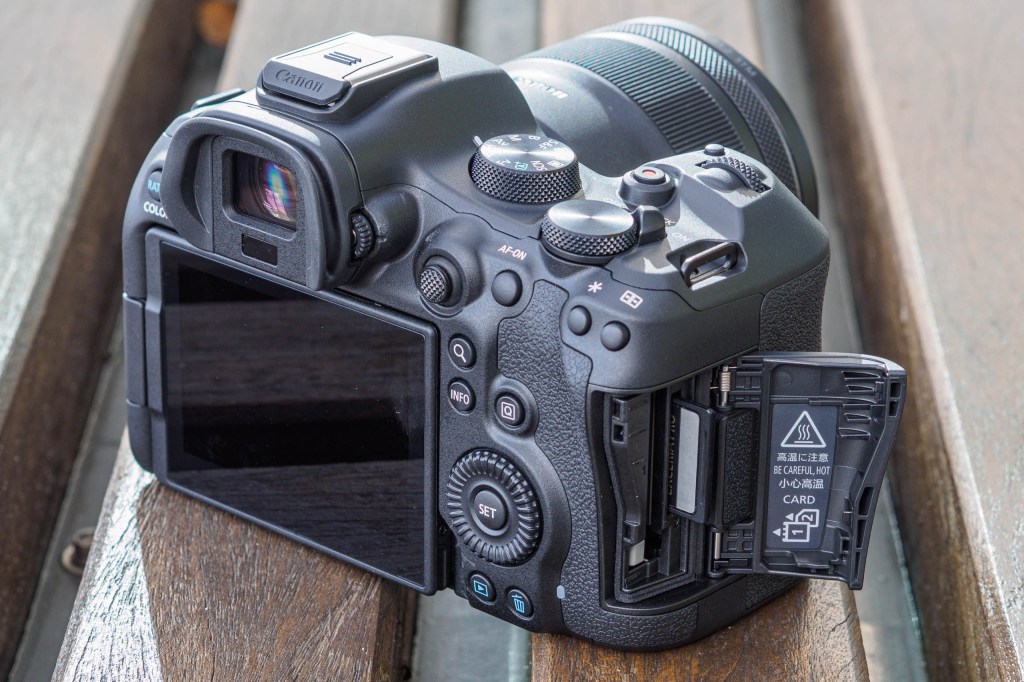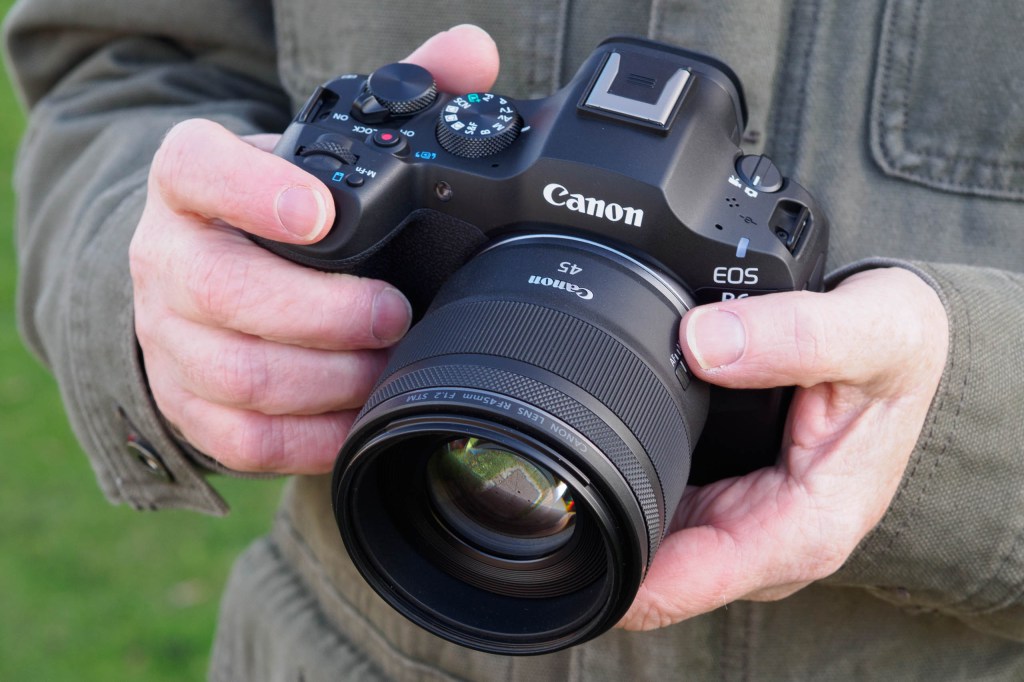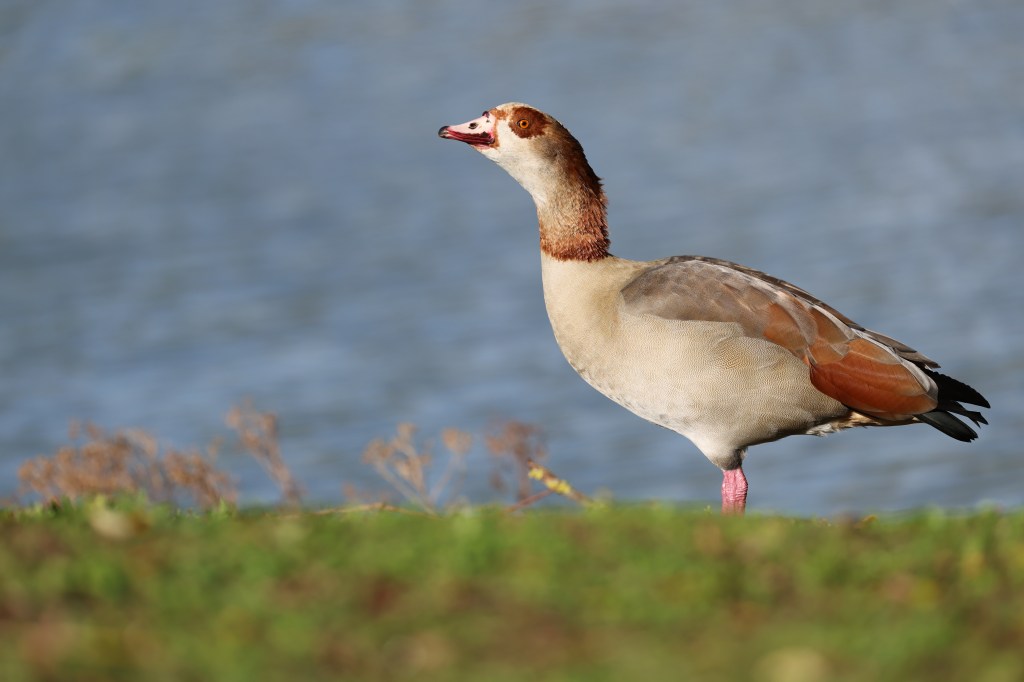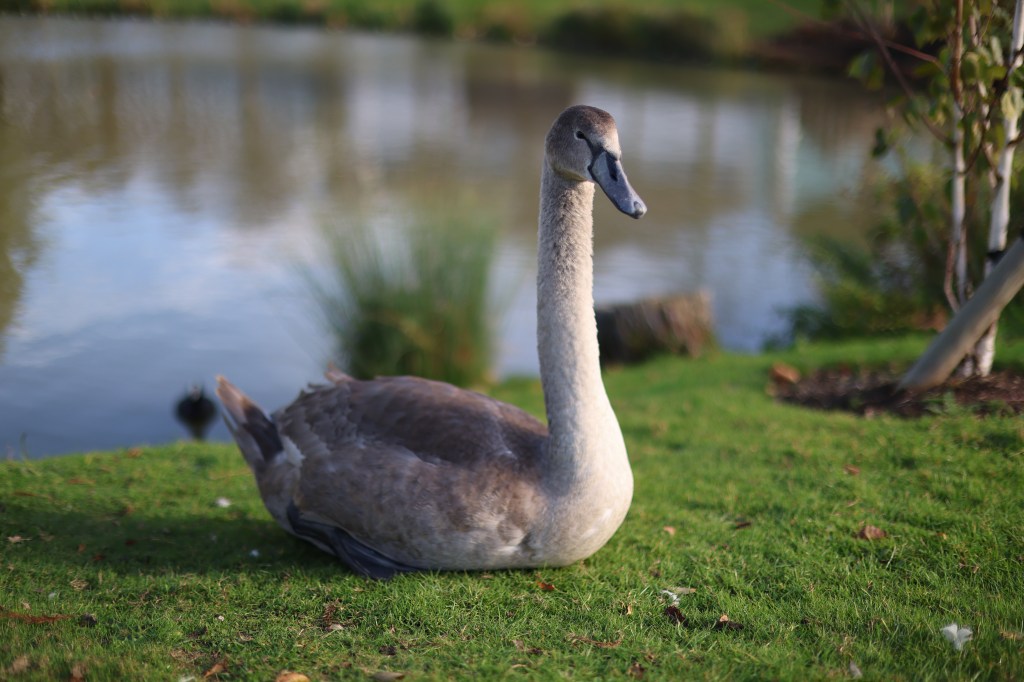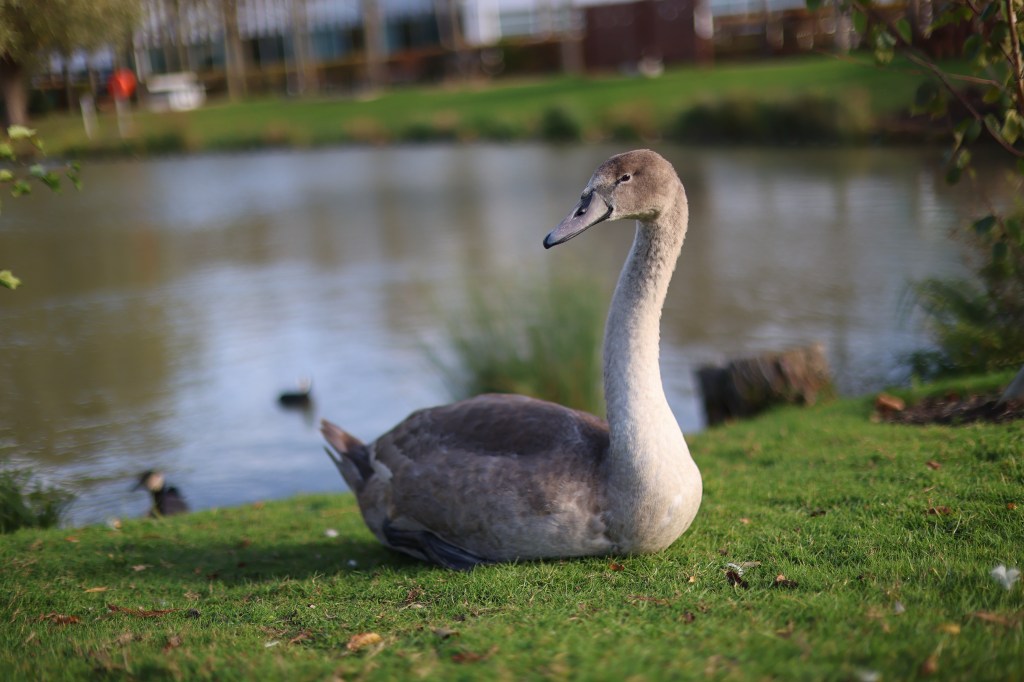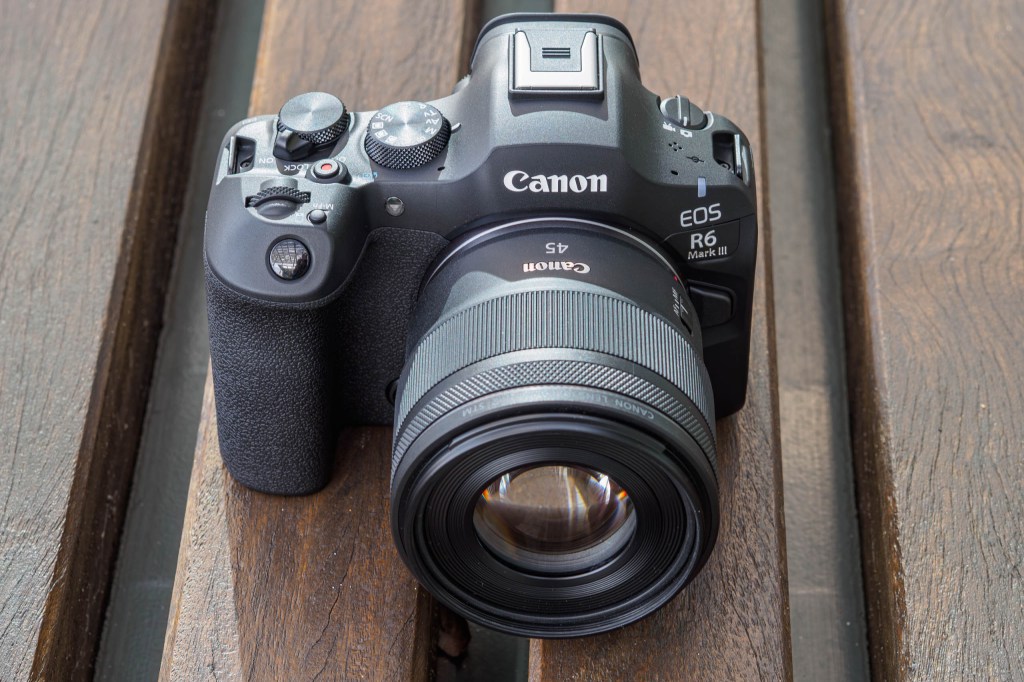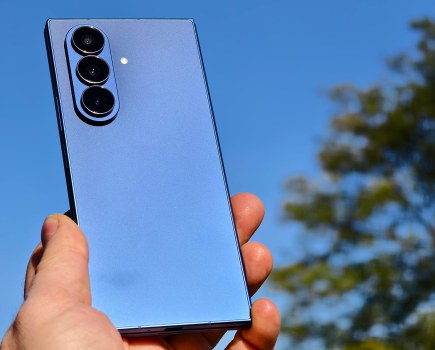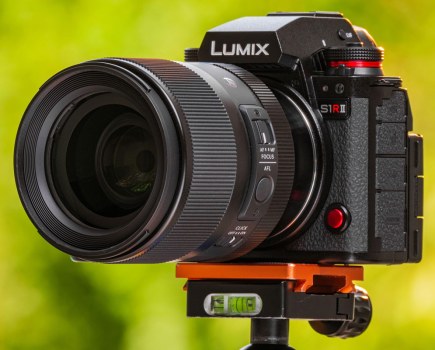The new Canon EOS R6 Mark III is a full-frame mirrorless camera that’s designed for serious enthusiast photographers. It employs a near-identical body design to its predecessor, the EOS R6 Mark II from 2023, but gains a higher-resolution 32.5MP sensor (up from 24MP). With an impressive all-round spec sheet, it should be capable of tackling almost any kind for task for both photography and video. I had the opportunity to try out the new model before its launch, and it feels like a well-judged evolution of the line. It’s a shoo-in to join our list of the best Canon cameras.
Canon EOS R6 Mark III at a glance:
- £2799.99 body-only
- £3149.99 with 24-105mm F4-7.1 IS STM
- £3899.99 with 24-105mm F4 L IS USM
- 32.5MP full-frame sensor
- ISO 100-64,000 (standard)
- Up to 40fps shooting
- 3.69m-dot, 0.76x OLED viewfinder
- 3in, 1.62m-dot articulated screen
- 7K 60p, 4K 120p video recording
- 8.5-stop in-body stabilisation
As it happens, the R6 III’s 32.5MP sensor isn’t entirely new, having first appeared in the Canon EOS C50 cinema camera in September 2025. In fact, the two cameras share many or their specs and features. But they use different processors and are very different in terms of design, with the C50 built primarily for video, and the R6 III for photography.
Costing £2799.99 body-only, £3149.99 with the basic Canon RF 24-105mm F4-7.1 IS STM lens, or £3899.99 with the premium Canon RF 24-105mm F4 L IS USM, the Canon EOS R6 Mark III will be going head-to-head with some pretty formidable competition. This includes the Nikon Z6III, Panasonic Lumix S1II, and the Sony A7 IV (which now looks outdated in comparison, and is surely overdue an update). I’m told the existing Canon EOS R6 Mark II will also remain on sale for at least the whole of 2026. But I think the new model brings enough to the table to put it straight to the top of its class.
Features
Let’s look at the EOS R6 Mark III’s specs in more detail. While the resolution has received a handy boost, this does comes with a small drop in high-ISO range. The sensor offers ISO 100-64,000 as standard, plus extended settings covering ISO 50-102,800 (those upper limits were ISO 102,400 and 204,800 before). I don’t think this counts as a significant step back, though; you’ll rarely, if ever, use such high settings in practice.

In many other respects, though, the major photographic specifications remain much the same. Using the mechanical shutter, you get shutter speeds of up to 1/8000sec and continuous shooting at up 12 frames per second. Switch to the silent electronic shutter, and those figures increase to 1/16000sec and 40 frames per second. That’s as fast as most photographers are ever likely to need – in fact, probably considerably faster.
Like a lot of recent cameras, you also now get a pre-capture mode for moments when you otherwise wouldn’t have time to react. In this case, it continuously buffers 20 frames while the shutter button is half-pressed, and then records them when it’s fully depressed. I find this can be particularly useful for shooting such things as sports and wildlife.
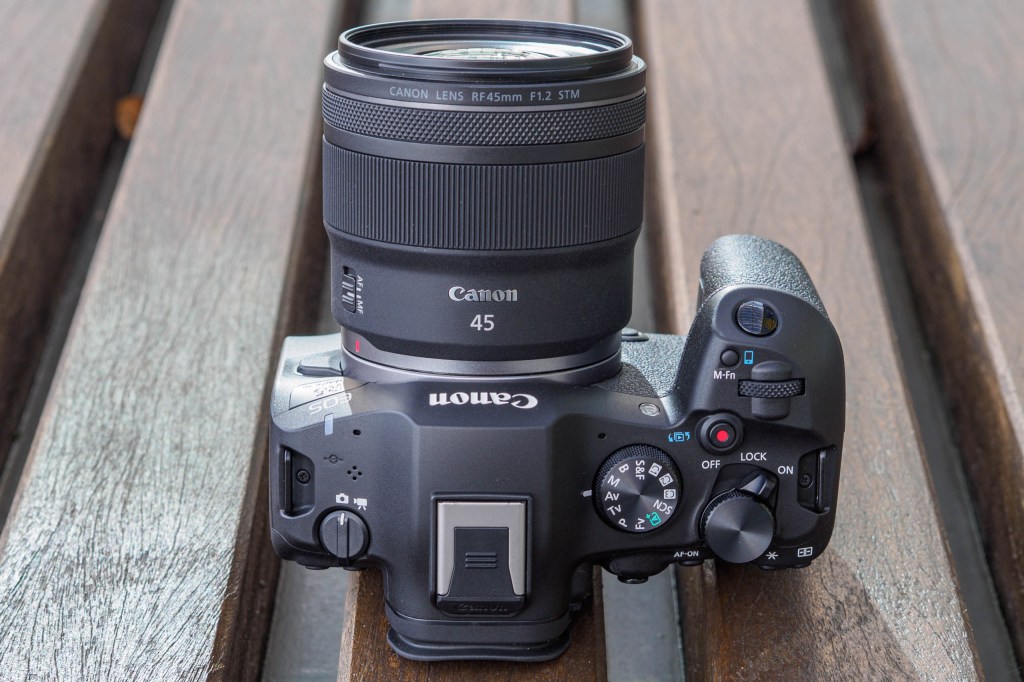
Autofocus employs Canon’s Dual Pixel CMOS AF II system, with no fewer than 6097 selectable points covering all but the extreme edges of the frame. Canon’s usual subject detection system is available, covering humans (eyes, face, head, and body); animals (dogs, cats, birds, and horses); and vehicles (racing cars or motorbikes, airplanes, and trains). I’ve found this system works very well on Canon’s recent cameras, with a reliable Auto option also available, so you don’t have to select your subject type in advance.
Other features are inherited from last year’s Canon EOS R5 Mark II. This includes the in-body image stabilisation system, which promises up to 8.5 stops of shake reduction at the centre of the image, and 7.5 stops at the periphery. That’s a match for any other camera in its class, and hugely useful for getting sharp photos hand-held using slow shutter speeds in low light.
You can also register faces for the camera to prioritise focusing on. It can recognise 10 at any given time, and you can save 10 groups (so up to 100 faces in total). This could be useful for applications such as sports or weddings.
It’s the video specs that get the most eye-catching boost, though. The R6 III can record raw video internally at 7K resolution and 60fps in 17:9 aspect ratio, or 30fps in Open Gate mode that capture the full sensor area. Alternatively, 4K can be shot at 120fps, and Full HD at 180fps, for slow-motion playback.
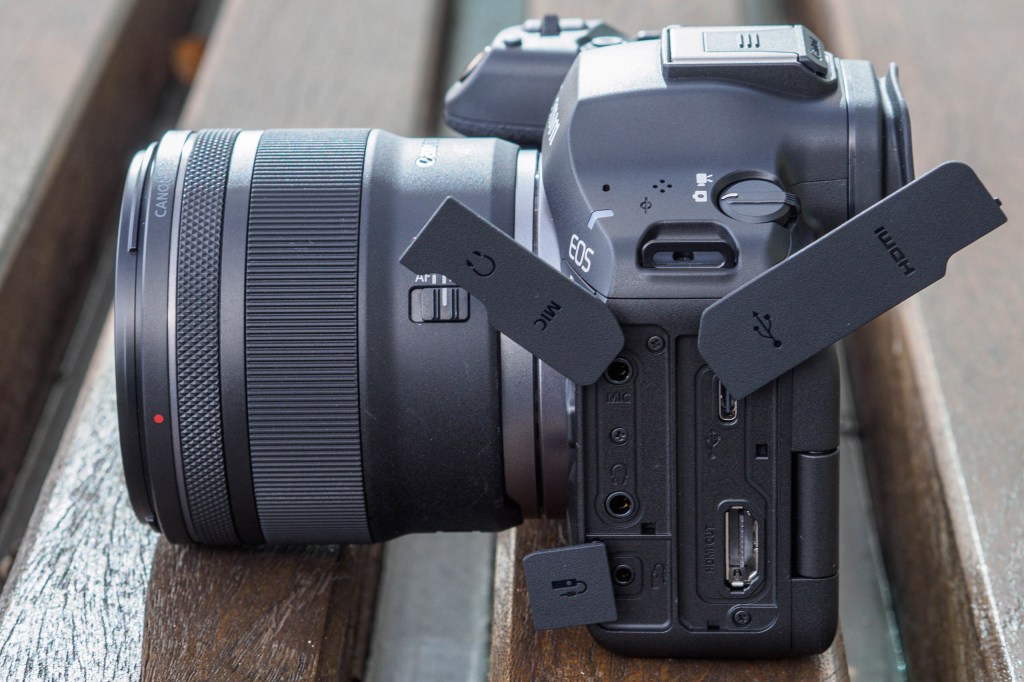
The camera can also output ProRes RAW to external recorders at 7K30. It provides false colour and waveform displays to help judge exposure, and includes Canon’s C-Log2 and C-Log3 modes that produce neutral footage for colour grading in post-production.
Like the EOS R5 II, the R6 III will ship with the higher-output LP-E6P battery, which is rated for 620 shots per charge with the LCD, and 390 with the EVF. While the camera is back compatible with the LP-E6N and NH variants, it won’t work with the original LP-E6. This means you’ll probably also be out of luck with many third-party clones – the one I tried certainly didn’t work.

The EOS R6 Mark III also accepts the same BG-R20 vertical grip as the EOS R5 II, which costs around £490. The BG-R20EP variant will work too if you have one, but its built-in ethernet port won’t function. However, the EOS R6 III doesn’t share the R5 II’s cooling vent system, which means it’s not compatible with the CF-R20EP cooling fan grip.
Canon EOS R6 Mark III key features:
- Sensor: The EOS R6 III employs the same new 32.5MP sensor as the recent EOS C50 cinema camera
- Video: Up-rated video features include 7K 30fps Open Gate recording and 4K at 120fps
- Storage: There’s one CFExpress Type B slot and one UHS-II SD slot, rather than dual SD slots as before
- Power: The camera comes with the LP-E6P battery. It can also be used with the LP-E6NH and LP-E6N, but it won’t work with the original LP-E6.
- Connectors: Users of external monitors / recorders will be pleased by the inclusion of a full-size HDMI socket. There are also USB-C, headphone and microphone, and 2.5mm remote release ports.
Build and handling
In terms of its physical design, the new camera is externally almost indistinguishable from the EOS R6 Mark II, with all the same controls in all the same places. That means it’s also very similar in operation to the more expensive EOS R5 Mark II, and even the professional Canon EOS R1. The body is absolutely covered with buttons, giving direct access to all the most important shooting settings, often in more than one way. Three electronic dials provide control over the main exposure settings, and most of Canon’s lenses have a control ring, too.
Personally, I’m pleased to see Canon not tinkering with the EOS R6 design, as I think it works really well already. Existing Canon users should be able to pick it up and feel right at home, more-or-less straight away. Personally, I particularly like how Canon gives you a dedicated ISO dial that lets you temporarily shift the setting when using Auto ISO, which I find very useful. Some new users might find the layout overwhelming at first, though; for example, there are no fewer than 10 controls placed for operation by your right thumb.
Canon hasn’t stood entirely still, and there are some additional button markings, indicating useful extra functionality in playback. Pressing the record button now toggles between viewing still images and videos, while the M.Fn button sends the displayed image to a smartphone. There’s a new S+Q position on the mode dial too, for slow and quick motion movie shooting. These are small changes, you have to give Canon credit for adding them.
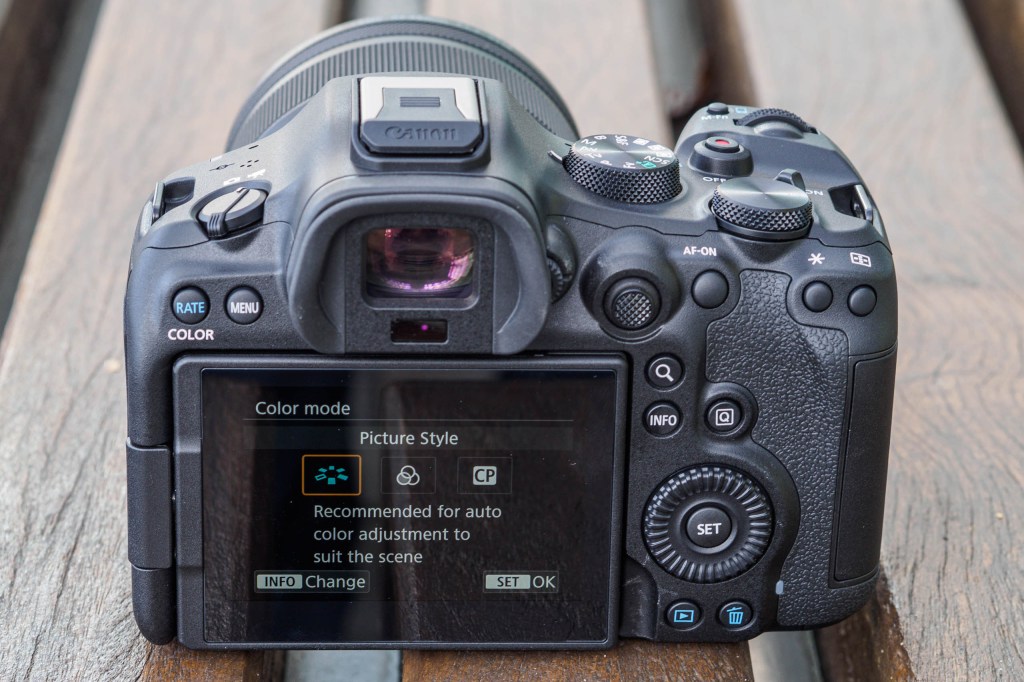
The ‘Rate’ button on the camera’s shoulder is also now labelled “Color”. You’d be forgiven for thinking this means Canon has adopted the current fashion for giving direct access to the camera’s built-in colour profiles, but it turns out that’s not quite the case. Instead, it allows you to select between using the different types of colour mode, namely Picture Styles, Color Filters, and Custom Picture settings (which are only available in video). However, you can’t then use it to choose between the individual colour modes themselves, which I can’t help but feel is a missed opportunity.
There are also a couple of significant changes under the covers. Firstly, rather than taking two SD cards, the EOS R6 III gains a CFexpress Type B slot to keep up with faster video recording bitrates, with a single UHS-II SD slot alongside. Secondly, its hybrid credentials are bolstered by the adoption of a full-size HDMI socket for connecting an external video recorder or monitor, in place of a fiddly and unreliable micro-HDMI port. Both of these are sensible updates, given the higher video spec. But if you’ve been using two SD cards in backup mode in an EOS R6 Mark II, you’ll now need to get some expensive CFexpress cards.
Viewfinder and screen
Canon has used essentially the same viewfinder and screen as before. This means a 3.69m-dot OLED viewfinder, with a 120fps refresh rate and 0.76x magnification. That means it’s a good size and nicely detailed, and can keep up with fast action without any significant lag.
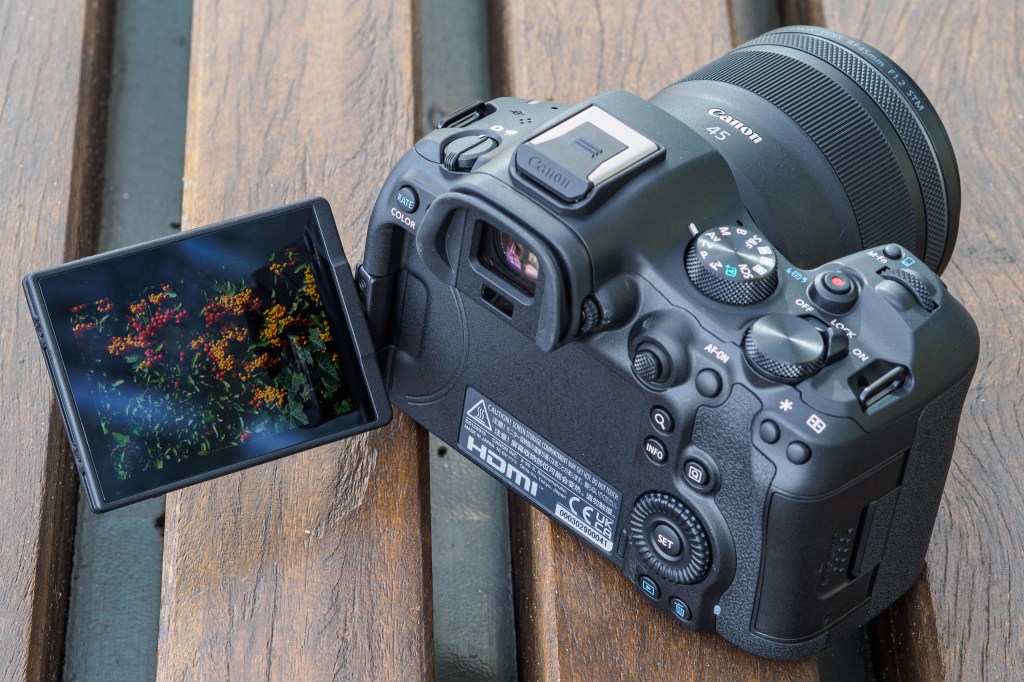
Meanwhile the screen is a 3in, 1.62m-dot LCD touchscreen with Canon’s usual side-hinged articulation, which allows it to face almost any direction for shooting at awkward angles. I find this all works very well.
Pre-production sample image gallery
Below is a small set of sample images shot using the Canon EOS R6 Mark III and either the Canon RF 70-200mm F2.8L IS USM, or the RF 45mm F1.2 STM. These are full-resolution out-of-camera JPEGs in the Standard picture style, and both the camera and RF 45mm F1.2 lens were pre-production samples. These shouldn’t be taken as representative of final image quality – instead they’re just a quick initial flavour of what the camera and lens can do.
Click on any image to see the full resolution JPEG.
Canon EOS R6 Mark III: My first impressions
From my time using the Canon EOS R6 Mark III, I think it looks like a very solid update to the line that keeps Canon at the front of the pack in this very competitive section of the market. That said, I don’t think many photographers using the EOS R6 Mark II will be scrambling to upgrade, while Nikon and Sony users will probably have too much invested in their systems already to consider switching. However, owners of the 20MP EOS R6 and the original 30.3MP EOS R will find plenty to tempt them here. Likewise, it’s a massive step up in capability for anyone still using Canon EOS DSLRs.
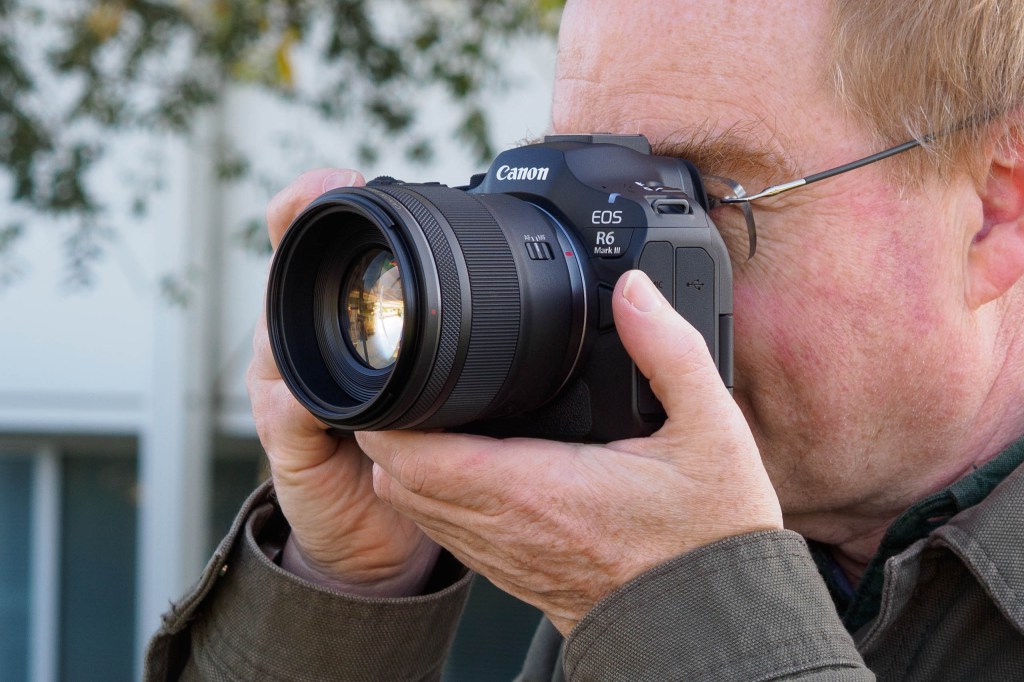
I’ve been a big fan of the EOS R6 series ever since the original model appeared. The cameras have proven to be excellent all-rounders that will do almost anything you need them to. Now, the Mark III looks set to continue with this winning blend of superb handling, high speed, impressive autofocus and excellent image quality, but the higher resolution sensor boosts its credentials for detail-rich subjects such as landscape and studio photography. All the indications are that it’ll jump right to the top of its class, and I’m looking forward to trying it out for real. Look out for my upcoming full review.
Follow AP on Facebook, Instagram, YouTube and TikTok
Canon EOS R6 Mark III: full specifications
| Sensor | 32.5MP Dual Pixel CMOS AF II, 35.9 x 23.9mm |
| Output size | 6960 x 4640 |
| Focal length magnification | 1.0x |
| Lens mount | Canon RF |
| Shutter speeds | 30-1/8000sec (mechanical), 30-1/16,000sec (electronic) |
| Sensitivity | ISO 100-64,000 (standard) ISO 50-102,400 (expanded) |
| Exposure modes | PASM, Fv, B, S&F, 3x Custom, Scene, Auto |
| Metering | Evaluative, partial, spot, centre-weighted |
| Exposure comp | +/-3 EV in 0.3EV steps |
| Continuous shooting | 12fps (mechanical shutter) 40fps (electronic shutter) |
| Screen | 3in, 1.62m-dot fully articulated touchscreen |
| Viewfinder | 3.69m-dot OLED, 120fps, 0.76x magnification |
| AF points | 6097 |
| Video | 7K 17:9 60p internal RAW, 4K 120p, 2K 180p |
| External mic | 3.5mm stereo, Multi-Function shoe |
| Memory card | CFexpress B, UHS-II SD |
| Power | LP-E6P Li-ion (also accepts LP-E6NH, LP-E6N) |
| Battery life | 620 (LCD), 390 (EVF) |
| Dimensions | 138.4 x 98.4 x 88.4 mm |
| Weight | 699g with battery and card |


